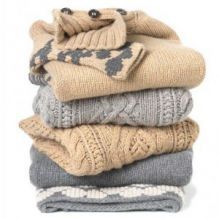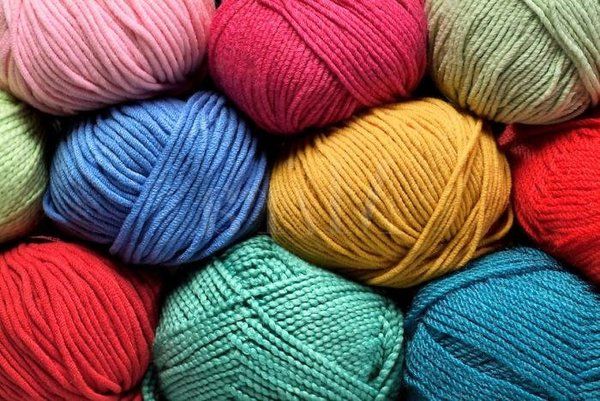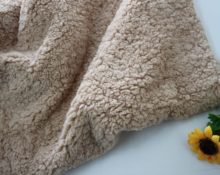The question of choosing a quality product that meets all consumer requirements has now taken the form of an obsession. Every buyer wants to spend their money wisely, getting the maximum benefit from their purchase. In this regard, disputes between adherents of things made from traditional natural fibers and supporters of technical progress do not subside for a minute.
Is it better to choose wool or acrylic?
It is impossible for an ordinary person to make a choice in favor of wool or acrylic without knowing the features and without considering the positive and negative aspects of these fabrics.

First of all, it is necessary to clearly formulate which fibers are considered acrylic and which are wool.
Wool is a warm natural yarn that is obtained after combing or shearing animals.
Acrylic - chemically produced yarn, similar in appearance to wool, but with its own qualities.
Characteristics and characteristics of wool

There are many varieties of wool, depending on the animal from which it is obtained. There are four types of sheep alone, differing not only in appearance, but also in quality characteristics:
- thin - downy, durable and elastic;
The finest quality fine wool is called merino.
- semi-thin - consists of lower quality fluff or fine hair, without impurities, long with a strong shine;
- semi-rough - a mixture of fluff and fine hair;
- rough - a mixture of fibers of all types, and according to its characteristics it is in last place.
More than 95% of all wool production comes from sheep.
In addition to sheep, the wool of other animals is used, named after their type:
- Angora rabbit (angora) - soft, tender and fluffy, unfortunately, wears out quickly;
- Angora goats (mohair) - warm, does not pill, has good moisture-wicking properties, but is rough to the touch;
- cashmere goats (cashmere) - soft, but not warm;
- camel - warm, but rough to the touch;
- alpaca - similar in appearance to cashmere, but warmer, lightweight and practically indeformable.
The alpaca llama belongs to the camel family. Its wool is considered one of the most valuable and is rarely used in its pure form.
Positive side
Natural wool has a number of undeniable advantages.

Items made from wool fibers create a comfortable feeling of warmth, softness and coziness. The elasticity and elasticity of wool fibers give the products strength and endow them with wear-resistant qualities. Due to the fleecy nature of wool fibers, they retain warm air well.Therefore, products made from wool yarn have high heat-protective properties, and wool itself is recognized as one of the best natural heat insulators.
Wool material allows the skin to breathe and has high moisture-absorbing properties. These qualities help it remain dry and warm even during intense exercise, which causes a person to sweat profusely.
Since there is no sauna effect in wool products, the growth of bacteria that causes the smell of sweat in such clothes is practically reduced to zero.
The therapeutic properties of wool have become widely known. Its “dry heat” is recommended for colds, diseases of the musculoskeletal system, circulatory disorders and other pathological conditions.
There is an opinion that the beneficial negative charges of wool fibers can remove harmful positive ones from a person.
Negative side
Despite the variety of positive qualities, wool also has negative characteristics.

It is difficult to use and is not suitable for everyone:
- if there are coarse and hard threads, it can cause irritation;
- can provoke allergic reactions;
- if stored improperly, it risks becoming a breeding ground for moths;
- washing can be the culprit of shrinkage;
- deformation is possible during drying;
- Long-term wearing causes pellets to appear.
When very wet, woolen items become heavy and take a long time to dry, so if exposed to conditions of high humidity, they may not live up to the expectations placed on them.
What is acrylic, description of the material
Acrylic fibers are not so diverse in their characteristics.
Over the course of just over seventy years of presence on the market, they have undergone minor improvements, but in general, from the very beginning of their existence, they have received the status of high-quality synthetics.
The basis for the production of acrylic fibers is natural gas.

Fibers are divided into:
- acrylic, containing more than 85 acrylonitrile and used in the manufacture of fabrics for clothing, home textiles for children's products, including soft toys;
- modacrylic, which contain from 35 to 85% acrylonitrile, they are used to create artificial fur, wigs, pile fabrics, furniture fabrics, carpets, toys and children's clothing.
Price differences in acrylic materials directly affect the quality and appearance of the products. Cheap ones will be rough, stuffy and creaky with obvious synthetic signs. Things of high quality and, accordingly, more expensive, are difficult to distinguish from natural ones in appearance, but are soft and airy to the touch.
A special feature of acrylic, as a synthetic fiber, is a continuous thread, which allows you to produce an even and smooth fabric, as well as obtain a pronounced weave pattern of threads.
For special processing of the material, continuous acrylic fiber is cut into pieces of equal length - staples. Products made from staple yarn look like wool. In this regard, the name “artificial wool” was assigned to acrylic.
pros
The popularity of acrylic fabrics is explained by the fact that their positive properties can compete not only with synthetic, but also with natural materials.
The main advantage of acrylic is its hypoallergenicity; it is ideal for people with hypersensitivity. In addition, the advantages of acrylic fibers include the following characteristics:

- the ability to maintain an excellent appearance and not be subject to deformation and shrinkage;
- strength, ability to withstand intense physical and chemical influences, wear resistance;
- low hygroscopicity and quick drying;
- not affected by moths and dust mites;
- ability to retain color for a long time;
- low thermal conductivity;
- softness and similarity to products made from natural wool;
- low cost.
Minuses
Despite the fact that the list of positive qualities of acrylic materials is quite long, they have a number of significant disadvantages that affect consumer demand.
Of the minuses, first of all, I would like to note the low air exchange rates of acrylic. The body does not breathe in it, and as a result, sweating increases. Despite this, acrylic fabrics retain heat less well.
To these disadvantages should be added the following:
- acrylic is highly electrified;
- it should not be overdried or exposed to high temperatures when washing - this causes the fibers to become stiff and lose elasticity;
- cheap products quickly lose their appearance, roll up, and can stretch;
- It absorbs fats well, so such stains are difficult to remove.
What is warmer in winter: wool or acrylic?

Although acrylic is a significant competitor to wool, it is less hygienic and wicks away sweat worse, without absorbing excess moisture from the skin. By preventing heat from escaping, it, unlike wool fibers, deprives a person of the air gap between the body and clothing. Such fabrics do not adapt to changes in the environment: in hot weather, wearing such clothes is stuffy and hot, in extreme cold there is a risk of freezing.
It is strictly not recommended for people with excessive sweating to wear acrylic products!
The natural uniqueness of wool products, which consists in a structure that retains heat in various weather conditions, allows you to immediately appreciate their superiority. They will protect the owner from getting wet both outside and under clothes, will keep you warm when the temperature outside is very low and will allow the body to breathe in a hot room.
In a dry room with a comfortable temperature, acrylic products give a feeling of comfort and warmth, but in conditions of winter weather changes it is better to give preference to natural woolen or mixed fabrics with a low acrylic content.
Conclusion
The slogan “all natural is the best” once again confirmed its validity.

Despite the successes of the chemical industry, wool natural materials are not going to lose their position in production. However, if their positive properties are enhanced by the advantageous characteristics of acrylic, materials are obtained that best meet the needs of the consumer and combine the advantages of wool and acrylic fibers. This is confirmed by the growing popularity of mixed fabrics along with pure wool.


 0
0





